Duong River maintains its poetic beauty
"Darling, do not be so sad
I will take you to the Duong River
In the old days, white sand was as smooth as glass
The sparkling river runs quietly..."
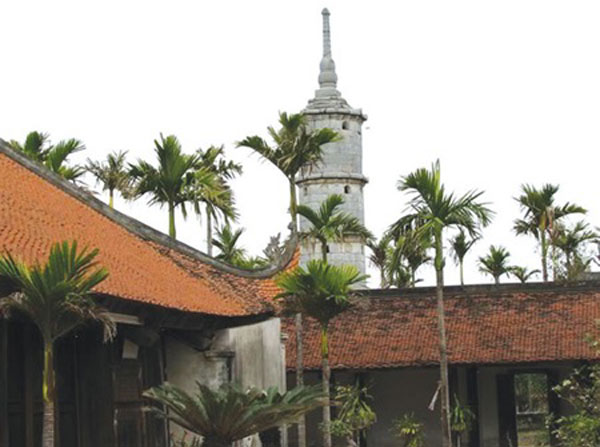 |
|
Survivor from the past: The ancient pagoda has been famous nationwide for its peaceful scenery and original architecture. Photos vietsentravel.com |
The trip from Ha Noi wasn't long. After riding for 30km, we arrived to the Duong River, running through Bac Ninh Province, which is well-known as the birthplace of sweet quan ho (love duet) melodies. We were in Thuan Thanh District, on the right side of the river.
The region is famous for diverse cultural and historical sites. This time, during my one-day stay, I chose to explore the region not by the highway, but by following a little path on the dyke that runs along the Duong, to be able to feel the peaceful beauty of the region.
The beauty of the river in the poem is comparable to what I saw. Time has passed since Hoang Cam wrote the poem, but the river has stayed the same. Peaceful landscapes can be seen along the dyke: white sand banks, mulberry groves, fields of bananas, maize, sweet potato and green vegetables.
On my right, little red-tiled roof houses were hidden by rows of bamboo. A group of children flew kites. The wind blew, easing the burning summer heat.
Following the path on the dyke, I visited some of the region's most famous cultural and historical sites: the Dong Ho folk painting village and But Thap Temple, both about 100m from the dike.
Folk painting village
The village is in Song Ho Commune. It is one of the few villages that has been able to preserve the ancient cultural relics of the Kinh Bac area in the Red River Delta of northern Viet Nam.
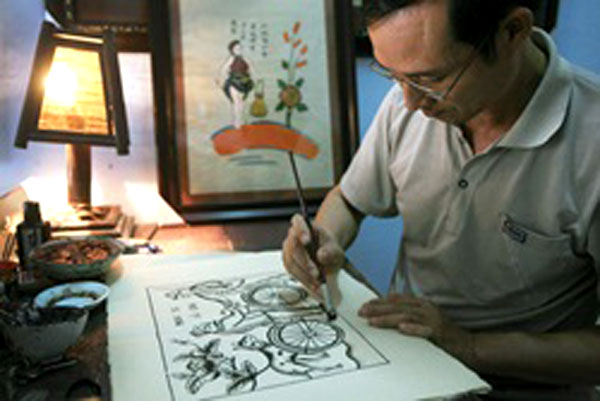 |
|
Detailed: Artisan Nguyen Huu Qua works on a Dong Ho painting. Photo quanho.com |
For a long time, Dong Ho folk paintings were forgotten. The few artisans making them quit their jobs and turned to making votive papers. However, during recent years, some people in the village have returned to the traditional art form, as the simple and natural beauty of Dong Ho paintings has become an indispensable part of people's daily lives – especially during Tet (Lunar New Year).
According to Nguyen Nhu Dieu, chairman of the Song Ho People's Committee, the art of making Dong Ho paintings has existed for centuries. Only three families in the village have been able to preserve the art of creating these paintings: the families of Nguyen Dang Che, Nguyen Huu Sam and Tran Nhat Tan.
Visitors to the village can watch members of the artisan families create their paintings.
"Previously, Dong Ho paintings could only be sold during Tet," said Nguyen Huu Qua, the 50-year-old son of artisan Sam. "Other than that, the paintings can only be sold at six fairs held in December. People like buying these paintings throughout the year, but just before Tet there is a surge in the number of clients."
Qua's children are also interested in the art, and have helped him paint since their childhood. His house has become a gallery of thousands of paintings.
Qua said that Dong Ho paintings are popular for their joyful images, which reflect humanitarian values. The paintings are also created with colours made from natural materials.
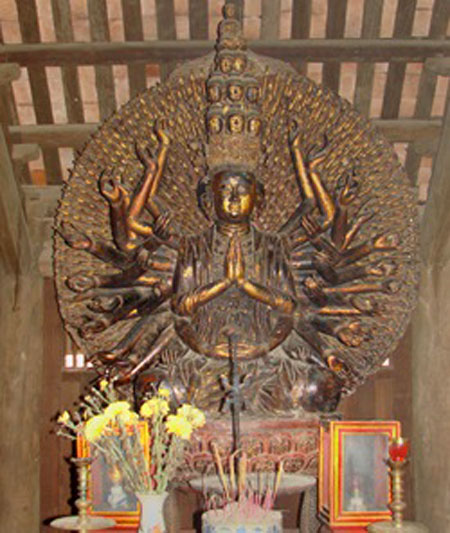 |
|
Masterpiece: The temple houses the Avalokitesvara wooden statue with one thousand eyes and a thousand arms, known as a sculptural masterpiece and the biggest in Viet Nam. File Photo |
The wood-block paintings printed on paper from the bark of the do (poonah) tree show people aspiring to live peaceful, happy, prosperous lives.
The paintings usually depict familiar scenes. For instance, animals such as cows, pigs, dogs, cats or chickens are depicted often. Some paintings, such as Catching Coconuts and Mice Wedding in particular, have drawn considerable attention from many domestic and foreign visitors.
After visiting the artisan's families, we toured the ancient village and lingered by a huge lotus flower at the local lake.
Ancient pagoda
Located a kilometre from the village, But Thap Pagoda is one of the most well-known in the country for its architecture and long history. It is said that the pagoda dates back to the 13th century.
Its picturesque beauty has inspired several filmmakers to shoot films there.
The pagoda houses a wooden statue of Avalokitesvara, with a thousand eyes and a thousand arms. It's the biggest in Viet Nam, and considered a masterpiece.
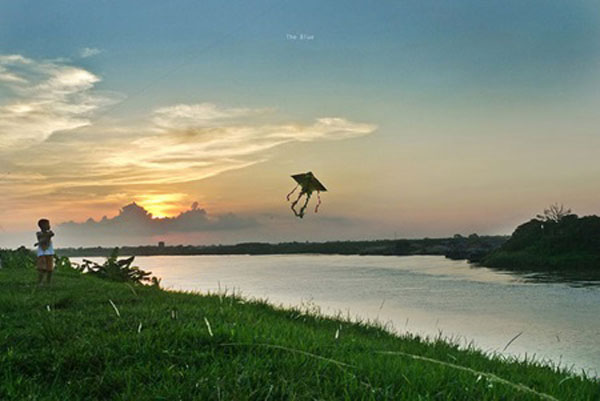 |
|
Tranquility: A boy flies akite on the banks of the Duong River. |
One of the most remarkable things at the pagoda is the five-storey, 13m-high stone bell tower, Bao Nghiem. The top of the tower is shaped like a giant pen. It symbolizes locals' love of studying. Despite being one of the smallest province of the country, Bac Ninh led the country in number of top scholars under the feudal regime (12 out of the country's total 46).
Inside, there are various valuable ancient objects and statues, including 17th-century wood carving masterpieces.
The pagoda was classified as a national precious treasure in 2012.
The sun set as we left the pagoda. We made our way back to the dyke to come back to Ha Noi. The beautiful, sparkling river ran slowly, and we slowed down, too, to watch the mantle of darkness engulf the water and immense surrounding fields.
* How to get there:
By bus: You can take the 204 bus from Luong Yen Bus Station, which goes directly to Ho Town in Thuan Thanh District.
By motorbike: From Ha Noi, cross Vinh Tuy or Thanh Tri bridge and take Highway 5. Then do ask residents the way to Thuan Thanh District.
What the stars mean:
★ Poor ★ ★ Promising ★★★ Good ★★★★ Very good ★★★★★ Exceptional
Latest News
More News
- Cultivating agricultural tourism model in Hanoi (April 05, 2024 | 14:51)
- HCM City stimulates tourism with discounts up to 60 per cent (April 04, 2024 | 16:01)
- Visitors to Vietnam in first quarter exceeded pre-COVID numbers (April 03, 2024 | 16:42)
- Domestic tourism under threat from high flight costs (April 02, 2024 | 12:19)
- Travelling back to nature (April 02, 2024 | 11:50)
- An Giang launches smart tourism information portal (March 29, 2024 | 10:20)
- Hanoi voted as ‘Best Food Destination for 2024’ by TripAdvisor readers (March 29, 2024 | 10:08)
- AirAsia Cambodia ready to take off starting with three domestic destinations (March 19, 2024 | 18:27)
- Phu Quoc among top beach destinations in Asia (March 19, 2024 | 15:55)
- Favourable visa policy boosts tourism recovery (March 19, 2024 | 15:44)



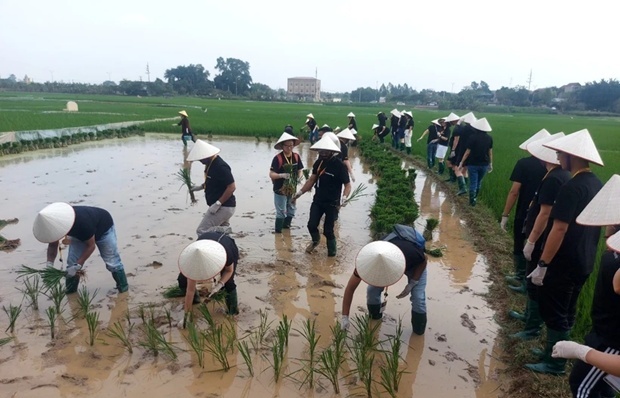


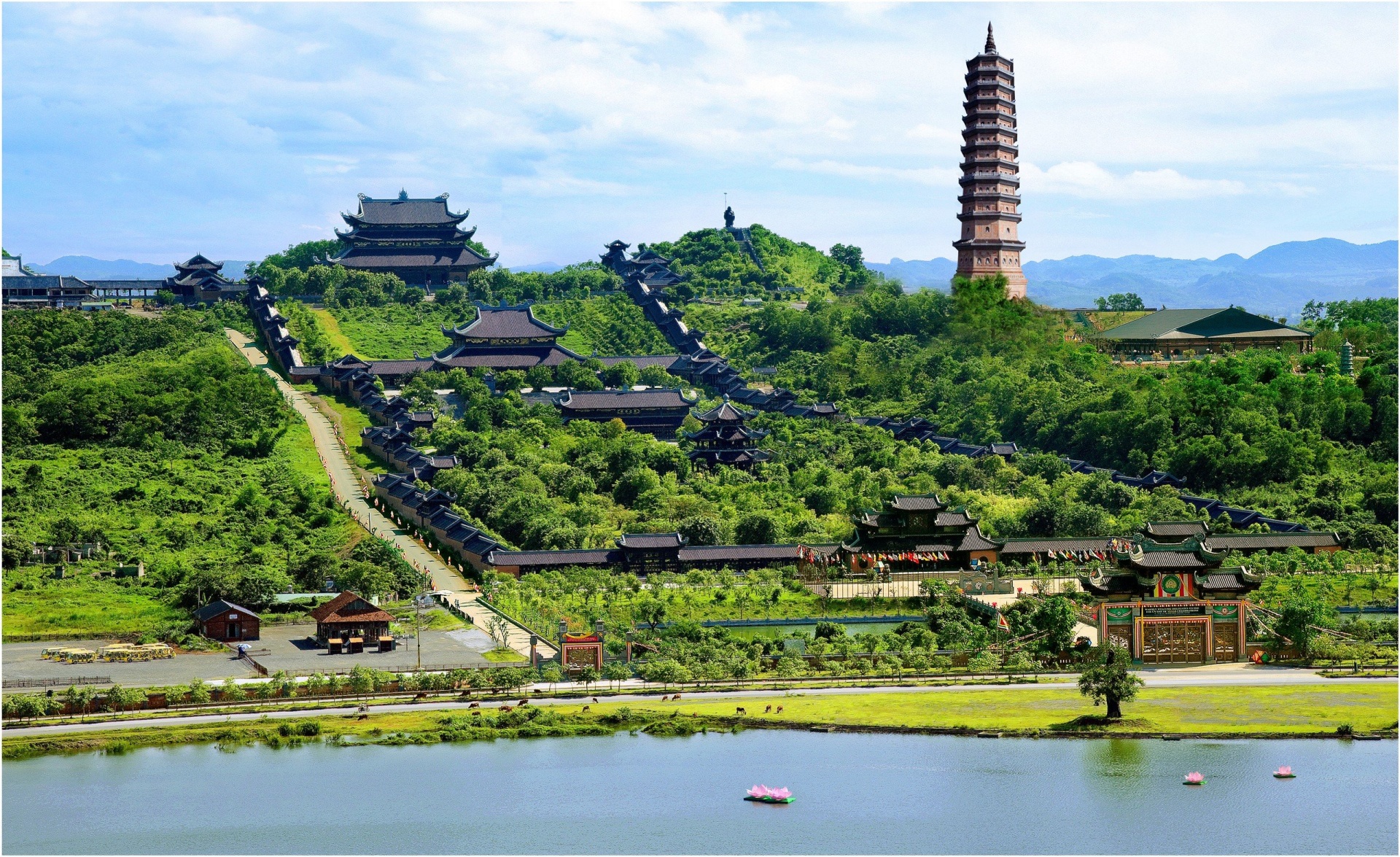






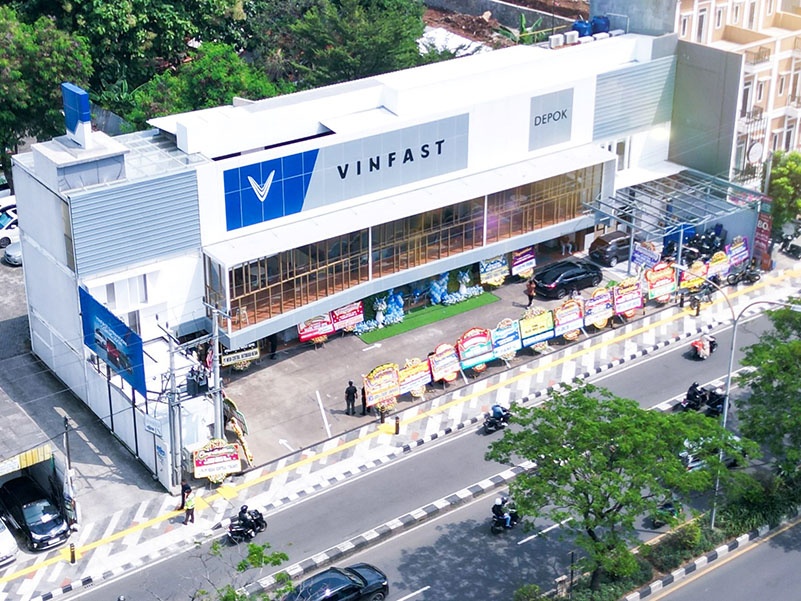




 Mobile Version
Mobile Version